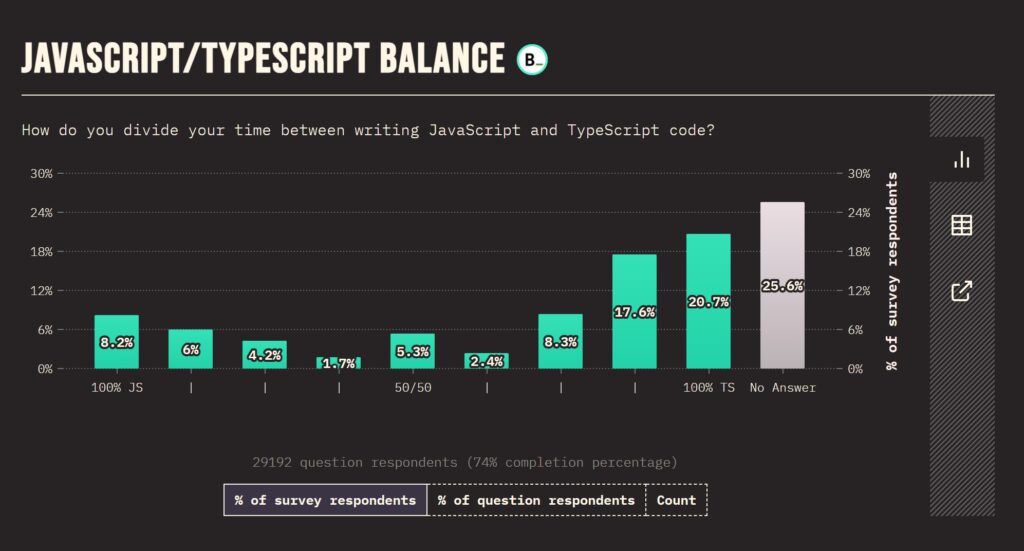
State of JavaScript, a survey of nearly 40,000 web developers (twice as many as last year), shows continuing dominance of TypeScript, enthusiasm for the Vite build tool and Tauri cross-platform toolkit, and that code architecture is now the biggest pain point, even more than dependency management.
The annual State of JavaScript survey is run by web designer Sacha Greif and computer scientist Eric Burel, and sponsored by several companies including Google. In this survey, Tauri tops the charts for retention (91.7 percent) and interest (73.9 percent) in the Mobile and Desktop category, though usage is just 5.3 percent. Note that in many cases the percentages sum to more than 100 percent thanks to developers using multiple technologies.
React remains the most widely used front-end framework, with 81.8 percent usage, ahead of Angular at 48.8 percent, slightly down on last year. When asked what framework most commanded their interest though, devs placed Svelte top, followed by Solid. Among rendering frameworks, Next.js is first (48.6 percent), ahead of Gatsby at 23 percent, but “interest” places Next.js roughly equal with SvelteKit and Astro.
Tauri is a tool for building apps for macOS, Linux and Windows, with mobile options promised. Applications are created using web frameworks such as pure HTML CSS and JavaScript, or Next.js, or SvelteKit; and then compiled together with a Rust binary to create a desktop application. Versus the better-known Electron, Tauri is smaller and faster and gaining popularity though both Electron and React Native has much greater usage – around 35 percent each versus Tauri’s 5.3 percent (up from 1.8 percent last year).

TypeScript usage is a remarkable 98.9 percent of those who answered the question on JavaScript flavors, reflecting perhaps the largely professional nature of the survey respondents – though only 75 percent answered the question, so real usage will be lower. The big news perhaps is in a question on JavaScript/TypeScript balance, which shows that 20.7 percent of respondents code solely in TypeScript, compared to 8.2 percent who only use JavaScript. Even though TypeScript compiles to JavaScript, it is a TypeScript-first world for many developers.
The Vite build tool is another winner in this survey, scoring 98.4 percent retention, 81.7 percent interest, and around 50 percent usage. Webpack still leads in usage with 84.8 percent, but Vite wins the survey at the “Most adopted technology” scored by year over year progression.
Are the likes of Deno and the even newer Bun having much impact versus the ubiquitous Node.js runtime? Node.js usage is much the same as last year, around 71 percent, but Deno has grown from 5.6 percent to 8.5 percent and Bun makes an appearance at 3.2 percent.
Asked for opinions on the state of JavaScript, around 40 percent consider that building JavaScript apps is too complex, fractionally more than last year, and 45 percent that the ecosystem is changing too fast. Over 55 percent would like to see static typing in the language, and the next biggest ask is for a standard library. The biggest pain point is now code architecture, defined as “organizing and maintaining your codebase,” whereas last year managing dependencies was in the top spot. State management comes next.
Finally, it is notable that the web stack is relatively well liked. Over 75 percent of devs feel that JavaScript is “moving in the right direction” and 58 percent are “Happy” or “Very Happy” with the general state of web technologies. Given that developers are a tough crowd to please, that is a good result for the ecosystem.
